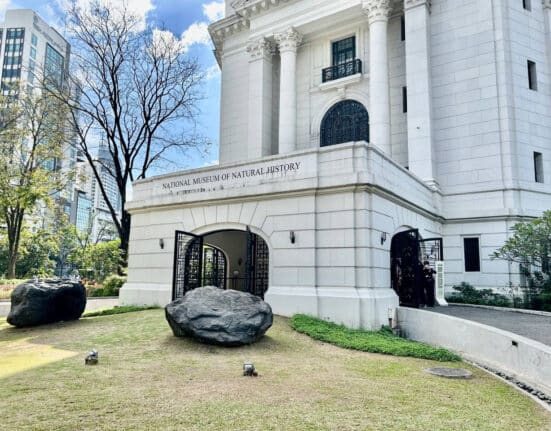THE National Museum of Natural History is among the flagship museums of the National Museum of the Philippines.
Twelve permanent galleries within the National Museum of Natural History showcase the vast biological and geological diversity in the Philippines.
It features imaginatively curated displays of botanical, zoological, and geological specimens. Indeed, it is a depiction of the Philippines as a biodiversity hub of the world.
Architectural design
The National Museum of Natural History was built in 1940 as an agriculture and commerce building by the renowned Filipino Architect Antonio Toledo.
The structure has a neoclassical architecture style.
The museum is spread over six levels, with the metal-framed glass dome now called the “Tree of Life” as the center of the museum’s atrium.
The “Tree of Life” foyer structure unites all the diverse habitats in the Philippines, from the mountains’ ridges to the ocean’s reefs.
On the museum’s ground level, visitors are welcomed by the six meteorites that fell in Philippine history.
The six meteorites were named Pantar, Orconuma, Paitan, Calivo, Bondoc, and Pampanga, based on the area where they fell.
The museum’s ground level also exhibits the skeletal remains of Lolong, the world’s largest crocodile in captivity.
Center of Rafflesia diversity
Aside from wild natural resources displayed inside the museum, the National Museum of Natural History also exhibits an endangered Philippine parasitic flowering plant, the rafflesia.
According to museum records, 13 species of rafflesia are distributed in the three major islands of the Philippines, making the country the center of rafflesia diversity.
Aside from the variety of natural resources, the museum likewise showcases a replica of a mangrove area that houses the country’s endemic ducks and marine biodiversity.
More and more endemic species
All other levels of the museum explore the wonders of the Philippine archipelago.
With more than a thousand preserved animals and other forest creatures, the National Museum of Natural History showcases the country’s jungle of treasures, from actual birds, native crocodiles, butterflies to tamaraws, a small-hoofed mammal native to the Philippines.
How to get there
The National Museum of Natural History can be found within Rizal Park, along with other national museums.
Museum-goers can visit the museum from Tuesdays to Sundays, from 10:00 am to 5:00 pm.
Who can visit?
Everyone is allowed to visit the museum. Aside from bringing an identification card, museum-goers are asked to present their proof of vaccination upon entrance.
Visitors are only allowed to take photos (with no flash) and are also prohibited from taking videos of the objects inside the museum to preserve the condition of the displays.
Entering the museum is free of charge.
How useful was this post?
Click on a star to rate it!
Average rating 0 / 5. Vote count: 0
No votes so far! Be the first to rate this post.
We are sorry that this post was not useful for you!
Let us improve this post!
Tell us how we can improve this post?









